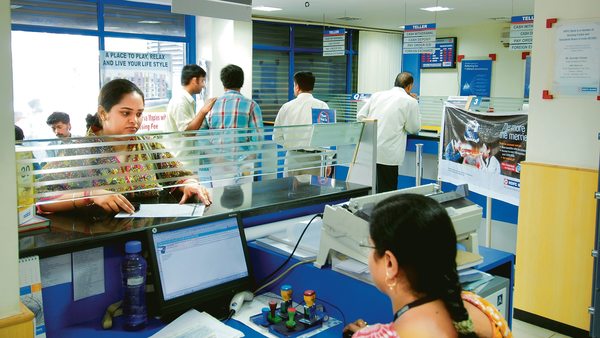
MUMBAI: The Reserve Bank of India (RBI) on Thursday relaxed the leverage ratio (LR) for banks in a bid to help them expand their lending activities. The leverage ratio stands reduced to 4% for Domestic Systemically Important Banks (DSIBs) and 3.5% for other banks.
The relaxation was announced in the accompanying statement on developmental and regulatory policies.
“Keeping in mind financial stability and with a view to moving further towards harmonization with Basel III standards, it has been decided that the minimum LR should be 4% for Domestic Systemically Important Banks (DSIBs) and 3.5% for other banks,” RBI said in the statement.
The leverage ratio, as defined under Basel-III norms, is Tier-I capital as a percentage of the bank’s exposures. The framework is designed to capture leverage associated with both on- and off-balance sheet exposures.
In this case, a bank’s total exposure is defined as the sum of the following exposures: on-balance sheet exposures; derivative exposures; securities financing transaction exposures; and off-balance sheet items.
Banks have been required to publicly disclose their Basel-III leverage ratio on a consolidated basis from 1 April, 2015.
The leverage ratio is considered an important supplement to the risk-based capital requirements. Therefore, banks are required to disclose, on a quarterly basis, the following irrespective of whether financial statements are audited: Tier-1 capital, exposure measure and leverage ratio.
The Basel Committee on Banking Supervision (BCBS) has set the minimum requirement for leverage ratio at 3%. A lowering of the ratio, with the capital as numerator staying fixed, would imply an expansion of the denominator, or the bank’s lending activity.
Banks have been required to publicly disclose their Basel III leverage ratio on a consolidated basis from 1 April 2015.
“What this does is allow banks to lend more from the same amount of capital they hold, giving them an impetus to lend more. While capital has not been a problem at State Bank of India (SBI), some of the smaller banks could have had constraints in that area, which now will ease to an extent,” said Prashant Kumar, chief financial officer, State Bank of India.

Leverage ratio is also one the four indicators under the RBI’s prompt corrective action framework. The relaxation in leverage ratio could help some of the banks currently under PCA comply with the leverage framework. However, this may not be enough as banks also need to see an improvement in net non-performing assets and capital adequacy ratio to come out of prompt corrective action (PCA).
As on March 2019, the banks which are under PCA include United Bank of India which has a leverage ratio of 3.98%, Indian Overseas Bank whose ratio stands at 3.89%, Central Bank of India (3.33%) and IDBI Bank (4.69%). For UCO Bank, leverage ratio stands at 3.38% as on December 2018.
“Reduction in leverage ratio (defined as capital measure/exposure measure) from 4.5% at present to 4% for systemically important banks and 3.5% for other banks, will improve their ability of some banks to support growth in their exposure. However, the same will be driven by additional exposures being of lower risk weights, such that they are able to maintain their capital ratios while reducing leverage ratio,” said Anil Gupta, vice-president and sector head, financial sector, Icra Ratings.
Bank credit growth slowed down over the last few months despite showing a pick up over the last one year. Non-food credit grew at 12.7% year-on-year to ₹96,225.9 crore as on 24 May 2019, compared with 12.95% in April 2019.
While credit flows from banks to large industries have strengthened, they remained muted for micro, small and medium industries.
According to media reports, the government plans to infuse₹40,000 crore into state-owned banks in this financial year to strengthen their balance-sheets and support credit growth.
[“source=livemint”]





